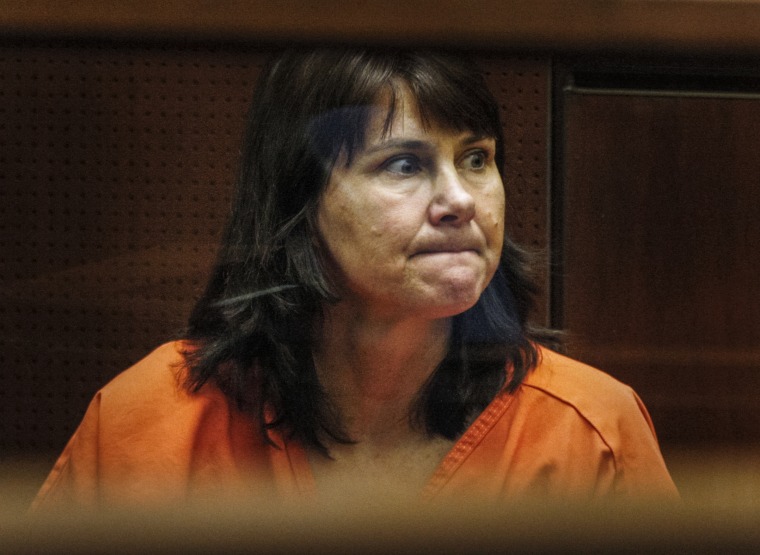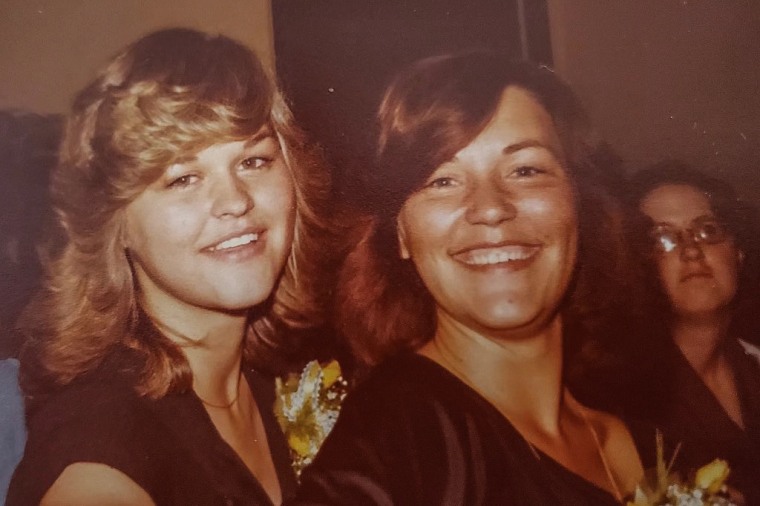A former Los Angeles police detective was convicted of murdering her ex-boyfriend’s wife in 2012, more than two decades after Sherri Rasmussen was killed in her Southern California condo.
But last month parole officials concluded that Stephanie Lazarus, the former detective who was sentenced to 27 years to life in prison, is eligible for parole. And Rasmussen’s relatives are outraged that the woman who hid the truth about the murder and continued to work as a law enforcement officer for more than 20 years could go free.
Lazarus, now 63 and incarcerated southeast of Los Angeles, pleaded not guilty during her trial and had not publicly admitted to her role in the 1986 killing until a parole suitability hearing on Nov. 16, according to two relatives who attended the hearing.
Connie Rasmussen, Sherri Rasmussen’s older sister, said in her family's first interview about the decision that while Lazarus acknowledged killing Sherri during the hearing, she did not apologize to relatives and appeared to downplay the seriousness of the crime, saying that she hadn’t intended to kill Sherri when she went to the Van Nuys condo on Feb. 24, 1986.

Lazarus was convicted of first-degree murder, Connie said, but she appeared to describe her crime as manslaughter.
Sherri, a nursing director at a Los Angeles-area hospital, was shot three times in the chest with a .38 pistol and struck in the head with a ceramic vase, authorities have said. Her left arm had also been bitten.
“I was shocked,” Connie, 69, said of the parole panel’s decision. “Sherri was that person that was giving back to the community, and she didn’t deserve to be killed. And she deserves justice.”
Releasing Lazarus now, she said, “is not justice for my sister. It’s another slap in the face.”
“She had 23 years to lie and to hide the evidence and to go on with her life when she could have turned herself in,” said Connie's daughter, Jessica Pannell, 35, who also attended the parole hearing.
When a parole commissioner asked Lazarus why she had not turned herself in, especially because she had taken an oath as a law enforcement officer, the former detective responded that she had been afraid of getting caught, Pannell said.
The decision from the parole panel is not final. It is subject to review by the full board within 120 days, and the governor has 30 days to weigh in on finalized decisions.
A lawyer for Lazarus did not respond to a request for comment.
A spokesperson for the agency that oversees the Board of Parole Hearings, the California Department of Corrections and Rehabilitation, said that the Nov. 16 hearing was Lazarus' first time before the parole board.
She was arrested in 2009 and granted more than four years of pre-sentencing credit for time served while awaiting trial, according to the spokesperson, Mary Xjimenez.
If Lazarus' parole is finalized, she would not be released before next July, her minimum eligible parole date, Xjimenez said.
A spokesperson for California Gov. Gavin Newsom said his office had not yet received the case.
“If it does, it will be reviewed carefully,” the spokesperson said.

Pannell recalled that at the beginning of the November hearing, the presiding commissioner said Lazarus was invoking a 2018 California law that aimed to reform how offenders who were younger than 26 when their crimes were committed are handled in the criminal justice system.
The statute cites state and federal high court decisions that have reviewed evidence showing that parts of the brain involved in behavior control are not fully mature until a person’s mid- to late-20s. According to the California law, with few exceptions, people who meet the criteria “are required to have a meaningful opportunity for parole during their natural life.”
Lazarus was a junior police officer and almost 26 when she killed Sherri.
To Connie, the law makes little sense in Lazarus’ case: Lazarus had graduated from the police academy and been found fit and competent enough to carry a gun.
“Yet she’s still eligible to use this criteria for early release?” Connie said.
The Department of Corrections did not respond to requests for comment.
Sherri had married Lazarus’ ex-boyfriend only months before she was killed.
Prosecutors argued that Lazarus was fueled by jealousy when she killed Sherri, who her sister recalled as loving and kind, driven and very bright: She had skipped two grades and started attending Loma Linda University at the age of 16.
LAPD investigators initially said Sherri was killed in a burglary gone wrong, but her family long suspected Lazarus may have been behind the murder and pushed detectives to investigate her.
In 2009, investigators with the department’s homicide unit who reopened the case compared a DNA sample taken from a bite mark on Sherri’s left shoulder with a sample secretly captured from Lazarus’ soda straw.
The samples matched, and Lazarus was arrested and charged with murder.
Lazarus denied the allegations, telling investigators she couldn’t believe they were accusing her, and during a nearly monthlong trial her lawyer argued that the DNA evidence had been corrupted.
A jury convicted Lazarus on March 8, 2012, after three days of deliberations.
